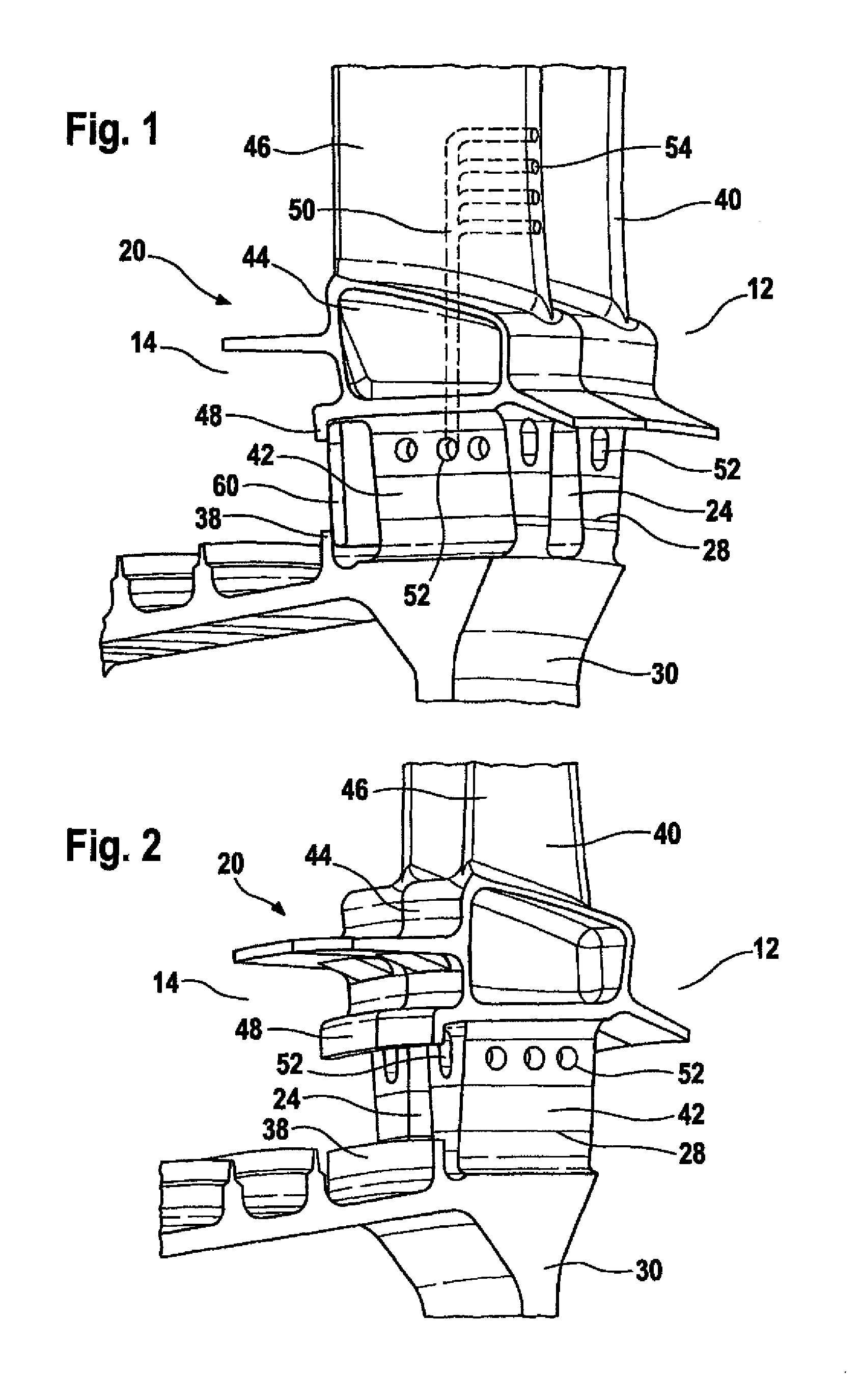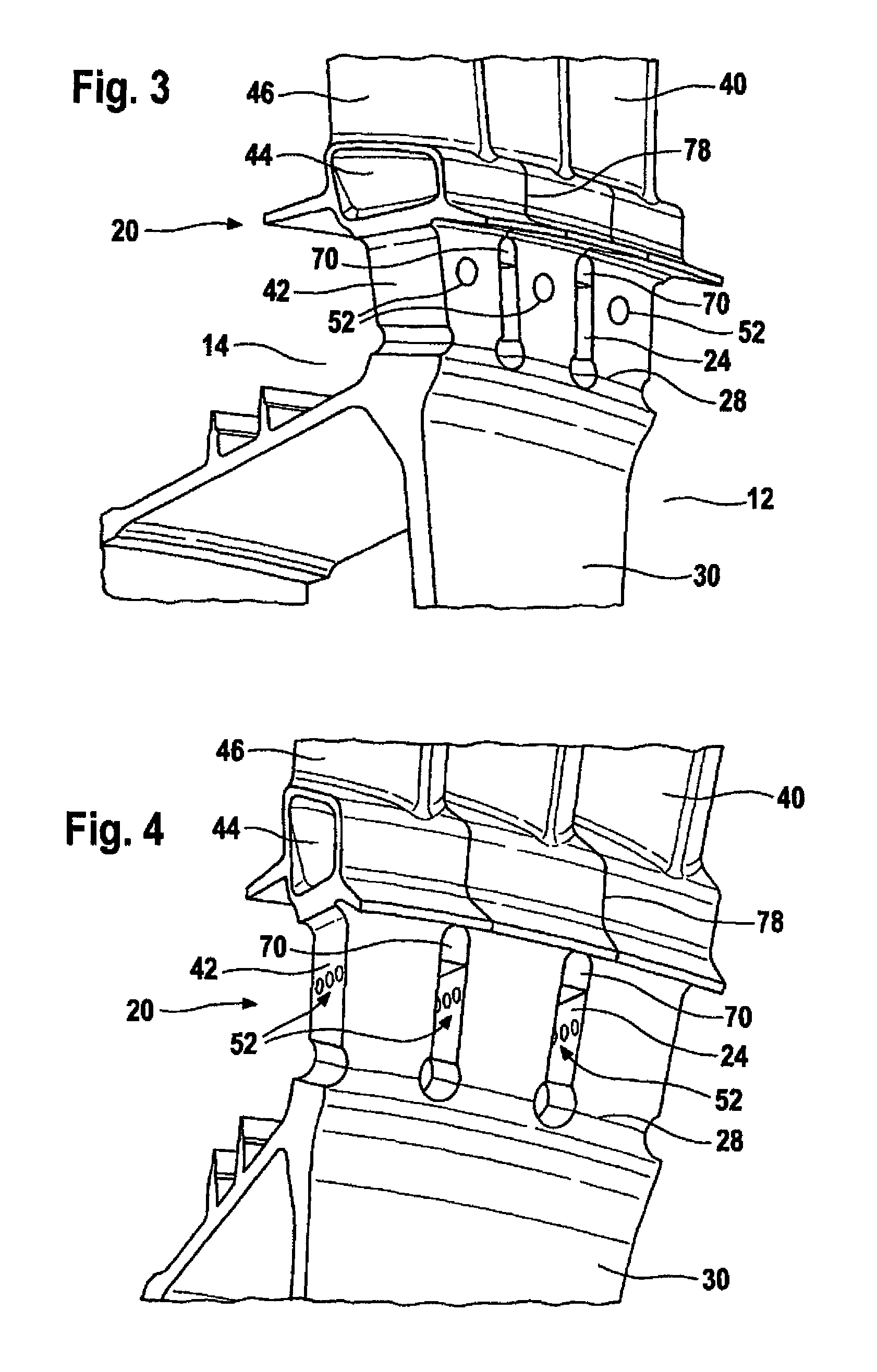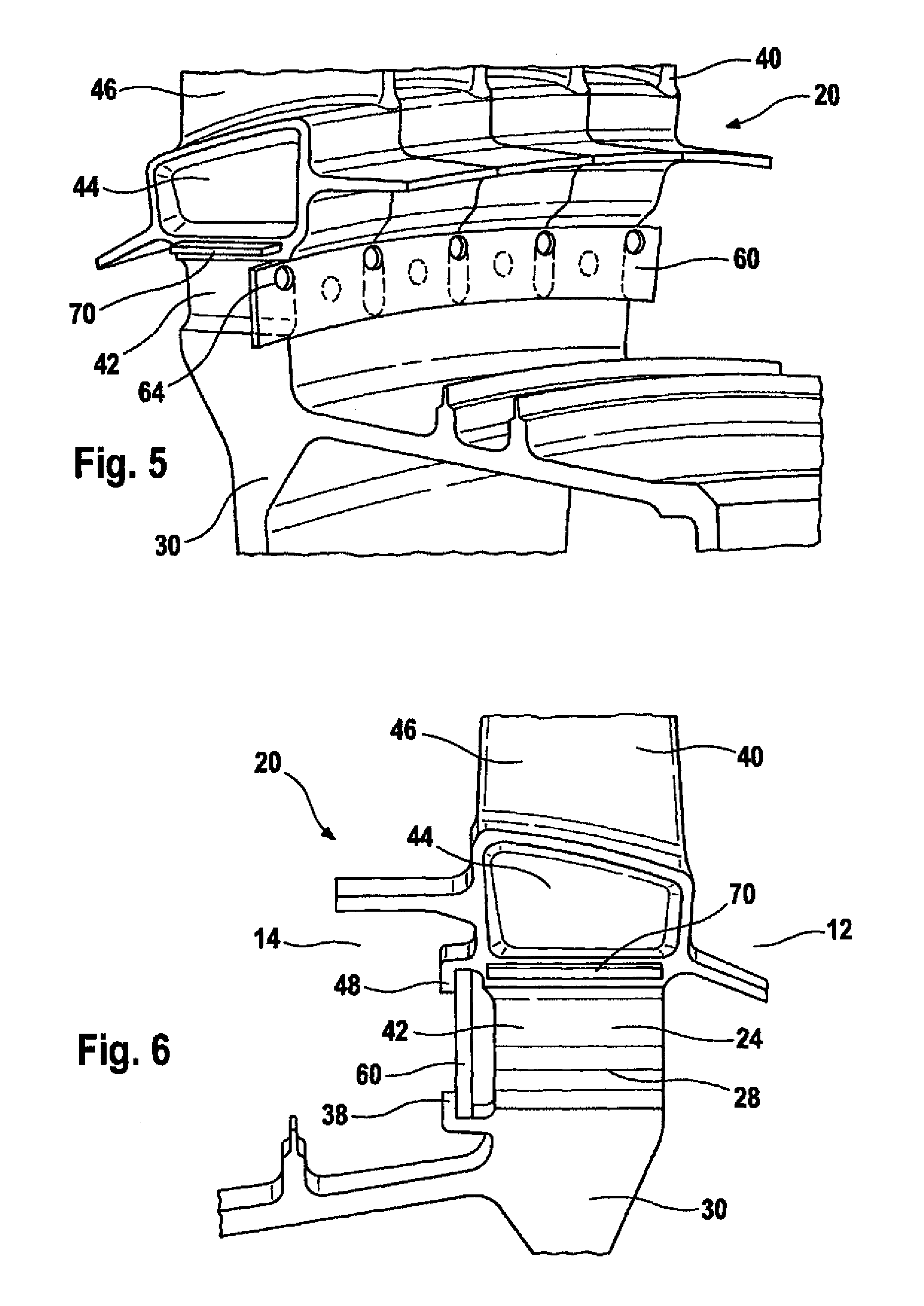Integrally bladed rotor disk for a turbine
a turbine and rotor disk technology, applied in the field of thermodynamics, can solve the problems of circumferential measurement spacing, possible or not easily possible, and the flow of cooling air between the shafts of the rotor blades, so as to improve the control of the cooling air stream, prevent or reduce the flow of cooling air, and the effect of small complexity
- Summary
- Abstract
- Description
- Claims
- Application Information
AI Technical Summary
Benefits of technology
Problems solved by technology
Method used
Image
Examples
Embodiment Construction
[0028]The figures described in the following show schematic representations of various specific embodiments of integrally bladed rotor disks. In each case, only one section of the rotor disk is shown, namely a radially outer region of a section of a disk element, to whose outer periphery, rotor blade shafts of a rotor blade ring are joined in a substance-to-substance bond. The rotor blades, in particular the blades thereof, are also only partially shown. Some of the figures show cylinders that are attached to the actual rotor disks and may be formed in one piece therewith, but are not discussed in greater detail in the following. FIG. 1 through 7 and 9 show perspective representations; FIGS. 8 and 11 show sections along a plane that includes the axis of the rotor disk. FIG. 1 shows an integrally bladed rotor disk 20 having a disk element 30 that is joined in a substance-to-substance bond in an outer region to rotor blades 40. Each rotor blade has a shaft 42, a platform 44 and a blad...
PUM
 Login to View More
Login to View More Abstract
Description
Claims
Application Information
 Login to View More
Login to View More - R&D
- Intellectual Property
- Life Sciences
- Materials
- Tech Scout
- Unparalleled Data Quality
- Higher Quality Content
- 60% Fewer Hallucinations
Browse by: Latest US Patents, China's latest patents, Technical Efficacy Thesaurus, Application Domain, Technology Topic, Popular Technical Reports.
© 2025 PatSnap. All rights reserved.Legal|Privacy policy|Modern Slavery Act Transparency Statement|Sitemap|About US| Contact US: help@patsnap.com



